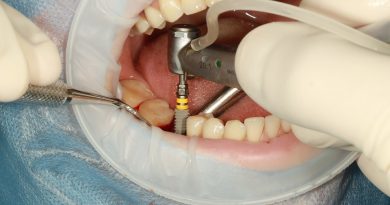Cardiac Arrest In Pregnancy: Immediate Steps To Take
Pregnancy is a crucial stage in a woman’s life when she needs the utmost care of her loved ones.
Despite the level of care, if the woman has a predisposed heart condition or is undergoing stress, her chances of a cardiac arrest are increasingly high.
During those times, you have to understand what steps you have to take to ease the pain of a pregnant lady.
You can watch many documentaries on how to give CPR on the pirate bay and learn all about helping a pregnant woman during a cardiac arrest.
Contents [hide]
What Is Cardiac Arrest?
When the heart stops beating correctly, it is called cardiac arrest. As a result, the brain and other essential organs no longer receive oxygen-rich blood from the heart.
A person in cardiac arrest is clinically dead without oxygen and will remain so unless they receive treatment very away.
While high-quality CPR can keep the heart beating artificially, AED equipment is required to restart the heart. An AED can resuscitate a person who has gone into cardiac arrest by administering a defibrillation “shock.”
A person in sudden cardiac arrest loses 7-10% of their chance of survival every minute they do not receive a shock from an AED defibrillator.
How Common Cardiac Arrest Is In Pregnancy?
Even though maternal cardiac arrest is less common than some other pregnancy-related complications, it nonetheless affects a significant number of women in the United States and around the world.
Dr. Zelop is the second author on an American Heart Association paper that portrays a bleak picture. According to the report, one out of every 12,000 women admitted for birth in the United States experiences abrupt cardiac arrest.
Due to maternal arrests that occur outside of the hospital, the overall number of women affected by this syndrome is likely to be higher.
In addition, many hospitals in the United States lack reporting mechanisms for maternal cardiac arrests.
Cpr On A Pregnant Woman
If a pregnant lady goes into cardiac arrest, you should follow the same three steps you would for anyone else. You should dial 911, do CPR, and use an AED to resuscitate the heart. The Call-Push-Shock guide and the following three basic actions are outlined in detail.
While the Call-Push-Shock guidance recommends hands-on CPR on cardiac arrest victims, traditional CPR with chest compressions and rescue breaths is advised for pregnant women. For additional information on CPR during pregnancy, see the links below.
Step 1
Recognizing cardiac arrest in a pregnant woman is the same as recognizing cardiac arrest in anyone else. First, make sure you’re responsive and breathing normally.
Assume they’re in cardiac arrest if they’re not responding or breathing regularly. You should dial 911 right away, do CPR, and have someone get an AED.
If you phone 911, be sure to tell the operator that the patient is pregnant.
Step 2
Place the woman on her back on a flat, hard surface, such as the floor, in the “supine posture.”
Then, in the center of their chest, press hard and rapidly.
With each compression, you should drive their chest down 2 inches. Compressions should be done at a rate of 100-120 beats per minute.
Give two rescue breaths after 30 compressions. Restart compressions right away. Carry on in this manner until an AED or emergency medical services arrives.
Step 3
Turn on the AED as soon as it arrives and follow the on-screen instructions. The AED will instruct you on how to proceed.
AEDs are used to monitor a person’s cardiac rhythm and decide if a defibrillation “shock” is required to restart the heart.
If a shock is recommended, the device will charge and deliver it. If a shock isn’t advised, the AED will inform you to keep performing CPR.
Why Is It Dangerous?
Pregnant women are especially prone to cardiac arrest-related oxygen shortage. This is because the fetus demands a large amount of oxygen from the mother during pregnancy.
In reality, to accommodate the fetus, women undergo a 20% increase in oxygen intake and a 40% rise in cardiovascular metabolism.
Changes in hormone levels such as progesterone and estrogen during pregnancy can further narrow airways and aggravate the dangers of maternal cardiac arrest.
Cardiac arrest is a particularly life-threatening condition in pregnant women due to these physiological abnormalities. Therefore, when a pregnant woman has a cardiac arrest, it is vital to administer high-quality CPR with rescue breaths and utilize an AED as soon as possible.
Stay Safe
We have given you ample guidelines on how to help a pregnant woman who is undergoing cardiac arrest.
However, you can reach us for help if you are confused about this subject. We will get back to you with an answer in no time.



